Green data center
.jpg)
A green data center, or sustainable data center, is a type of server facility that utilizes energy efficiency technologies. These data centers do not contain obsolete systems such as inactive or underused servers and instead take advantage of newer and more efficient technologies.
With the exponential growth and usage of the internet, power consummation in data centers has increased significantly. Due to the environmental impact, rise in public awareness, higher cost of energy and legislative action an increasing pressure has been placed on companies to follow a green policy. For these reasons, the creation of sustainable data centers has become essential in both an environmental and business sense.[1]
Energy use in Green Data Centers
In recent years, the use of high-performance computing techniques has increased, trading off energy consumption for obtaining increased performances. Industry estimates suggest that the data center sector is consuming around 3-5% of the world’s global energy.[2] According to the latest AFCOM State of the Data Center survey, 70% of data center providers indicated that the power density (per rack) has significantly increased over 2013. That means that managers have been forced to find new ways to power their data centers, using renewable energy sources such as Solar, Geo-thermal and Wind. Furthermore, more efficient technologies developed in order to decrease the power consumption in data centers.[3]
Metrics
There are several metrics invented to measure power efficiency of data centers. The power usage effectiveness (PUE) and Carbon Usage Effectiveness (CUE) are two highly used metrics created by The Green Grid (TGG), a global consortium to advancing energy efficiency in data centers.
Power Usage Effectivness (PUE)
PUE was invented in 2007 and proposed new guidelines to measure energy usage in data centers.
This ratio tells us basically how much extra energy a data center needs to maintain the IT equipment for every watt delivered to IT equipment. The best PUE a data center can have is 1 which is the ideal situation with zero extra energy usage. After the introduction of PUE it is found in various studies that average PUE for the industry was between 2.5 and 3. In more recent studies it is observed that average PUE values fell to around 1.7 by using this framework. As a result, PUE started the shift of the data center industry towards energy efficiency.[4]
| PUE | 1.2 | 1.5 | 2 | 2.5 | 3 |
|---|---|---|---|---|---|
| Level of Efficiency[5] | Very Efficient | Efficient | Average | Inefficient | Very Inefficient |
Until now, the PUE is the most used metric for data centers to measure the energy efficiency. However, the reliability of PUE is still discussed by some sources.[6][7] The main reason of this discussion is that the PUE can change significantly depending on the measurement time and time period.
Carbon Usage Effectiveness (CUE)
Carbon usage effectiveness (CUE) is another metric in order to measure the energy usage and sustainability. It is calculated by the following formula[8]
Another way to express this formula is the product of the Carbon Dioxide Emission Factor (CEF) with the PUE, where CEF is the kg of produced for each kilowatt-hour of electricity:
- ×
CUE takes into account the carbon emission, so in some ways it may be a more accurate representation of the sustainability of a data center compared to PUE since some data centers can have low PUE scores but still have high carbon emission. Used with PUE, these metrics allow us to examine the energy efficiency in more detail.[9]
Certification
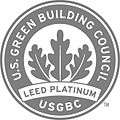
Data centers can be certified as green data centers. One of the popular certificats is the Leadership in Energy and Environmental Design (LEED), which is a green rating system for buildings. It is developed by US Green Building Council and has a set of rating systems for different categories. Depending on ratings data centers can get a Silver, Gold or Platinum certification. The Platinum certification is given to data centers with the highest level of environmentally responsible construction with efficient use of resources.[10]
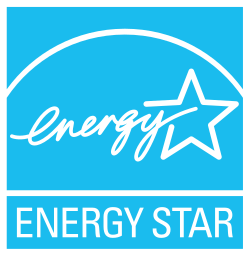
Data centers can be also certified by Energy Star which is a part of an initiative by the U.S. Environmental Protection Agency and the U.S. Department of Energy called the National Data Center Energy Efficiency Information Program. This program certifies buildings and consumer products for their energy efficiency. Only data centers that are in the top 25% energy performance range can receive an Energy Star certification.[11]
Green Data Center Technologies
There are several technologies to increase the efficiency and decrease the energy consumption in data centers.
Low power servers
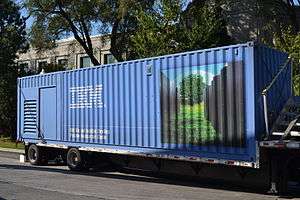
Low power servers are servers which are more energy efficient than current servers used in data centers. These servers use the technology of smartphone computing which tries to balance performance with energy consumption. The first low power servers were launched in 2012 by big IT providers like Dell and HP. When they are used correct, they can be much more efficient than current servers. The low power servers can have a big impact on the data centers because they can decrease the power consumption and capital and operating costs of cooling facilities.[12]
Modular data centers
A modular data center is a portable data center which can be placed anywhere where data capacity is needed. In comparison to traditional data centers they are designed for rapid deployment, energy efficiency and high density. Due to the fact that these data centers are ready-made data center-in-a-box, this technology became very popular. For example, the modular data center “HP EcoPod” supports more than 4.000 data centers with a PUE rating of 1.05 in combination with free air cooling.[12]
Free air cooling
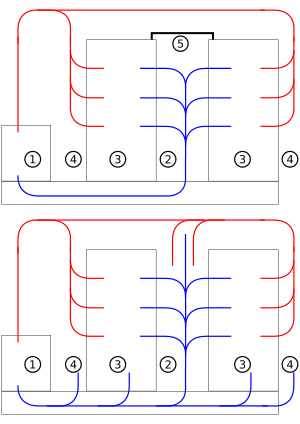
Free air cooling systems uses outdoor air instead of using traditional data center Computer Room Air Conditioner (CRAC) units.[13] Outdoor air still needs to be filtered and moisturized, however, with this method much less energy is required to cool the data center. Outdoor air temperature is an important issue here and the location of the data center plays a critical role to implement this technology.[14]
Hot and cold aisle containment
In this method, the rows of the racks are aligned in a way that the back of the servers are facing each other. The created aisles are enclosed in order to capture the air. In hot aisle containment, the heat produced by the servers is trapped inside and pumped to the cooling units. In contrary in cold aisle containment, cold air is pumped to the enclosed aisles whereas the rest of the data center has higher degrees of heat. Both of these containment methods are more effective compared to traditional cooling technologies and can help to reduce the energy consumption and its impact. It is also shown that although it may be harder to implement, hot aisle containments are more effective compared to cold aisle containments.[15][16]
Reusing waste heat
Data centers use electric power and in return the release more than 98% of this electricity as heat energy. The main idea in this case is that produced waste heat can be actively reused. Thus, a data center becomes a district energy system, creating a closed-loop system that has no waste. There are already some examples of data centers around the world which are turning waste heat into heat energy that can be used, such as:
- IBM Reusing Data Center in Switzerland, in which the heat is used to warm a local swimming pool
- In Finland, Yandex and Academica data centers that, instead of vented heat to the atmosphere, are replacing the heat energy used by 500-1000 homes with data center energy.
- Amazon reused the heat of a nearby data center for the biosphere project_t in Seattle[17]
Ultrasonic humidification
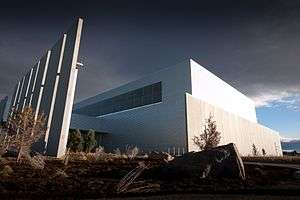
A certain level of humidity is necessary for data centers to work efficiently and prevent damages to devices and servers. There are several ways to produce vapor and ensure humidity. Ultrasonic humidification uses ultrasound frequency to create vapor. This system uses %90 less energy compared to conventional methods (such as resistance steam humidifiers).[18]
Evaporative cooling
This method uses the idea of heat decreasing by evaporation of water. Two main methods are used in order to realize this idea; usage of evaporation pads and high pressure spray systems. In evaporation pads, air is drawn through pads, which makes water evaporate and air cool. The second most used technique, High pressure spray systems, needs larger areas and consumes more energy because of the usage of pumps. Evaporative cooling is dependent on the geographical location and the season because they affect the moisture level in the air. In general, compared to traditional mechanical cooling systems, evaporative cooling uses significantly less electric.[19]
References
- ↑ "Sustainable data centers: 5 key questions".
- ↑ "Focus Green datacenter" (PDF). docs.media.bitpipe.com.
- ↑ Inc., Advanced Solutions International,. "AFCOM Home". www.afcom.com.
- ↑ "Analysis of performance metrics for data center efficiency – should the Power Utilization Effectiveness PUE still be used as the main indicator? (Part 1): REHVA". www.rehva.eu.
- ↑ "PUE Calculator – 42U".
- ↑ "Green Power Usage Effectiveness - GPUE". 7 March 2012.
- ↑ "Are you Measuring your Green KPI's like Power Usage Effectiveness (PUE) = Cooling + Power + Lighting + IT/ IT - Anaeko". 13 May 2013.
- ↑ "White paper guidelines" (PDF). tmp2014.airatwork.com.
- ↑ "Carbon Usage Effectiveness (CUE) ? a new sustainability metric - Netmagic". www.netmagicsolutions.com.
- ↑ "What is LEED Certification for Data Centers? - Lifeline Data Centers". 23 October 2014.
- ↑ "Energy star certification". datacenterknowledge.com. Retrieved September 1, 2018.
- 1 2 "Top technologies that can make your datacentre green".
- ↑ "Free-air cooling – using natural cooling in the data centre".
- ↑ "Whitepapers". www.stulz.de.
- ↑ "Impact of Hot and Cold Aisle Containment on Data Center Temperature and Efficiency" (PDF). Retrieved 2018-09-04.
- ↑ "Think Inside the Box & Implement Containment for Energy Savings". www.greenhousedata.com.
- ↑ "How to Reuse Waste Heat from Data Centers Intelligently". 10 May 2016.
- ↑ "Fact sheet" (PDF). www.energystar.gov.
- ↑ "How Free is Evaporative Cooling in the Data Center". www.greenhousedata.com.